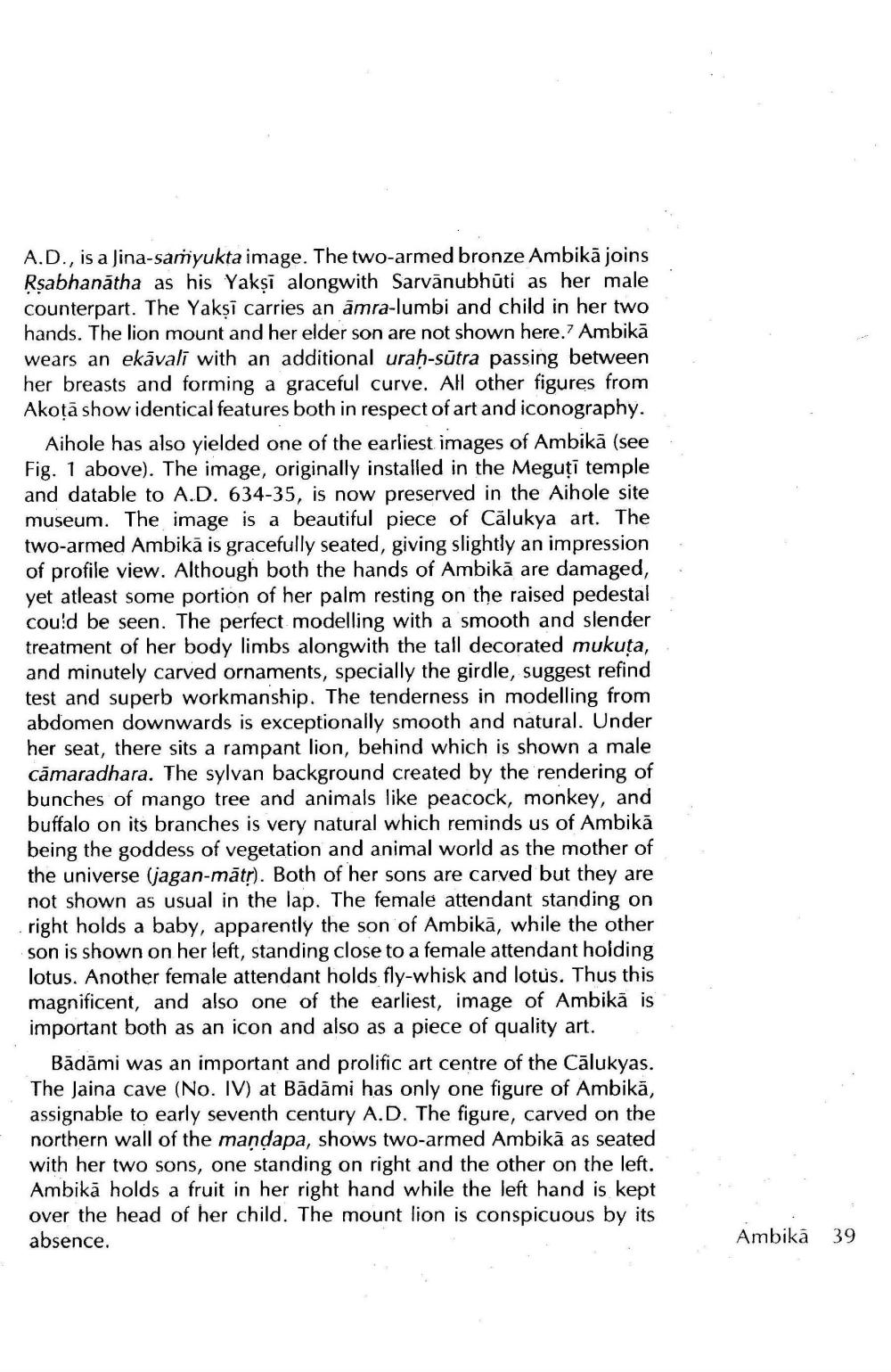________________
A.D., is a Jina-samyukta image. The two-armed bronze Ambikā joins Rsabhanātha as his Yaksi alongwith Sarvānubhūti as her male counterpart. The Yaksi carries an amra-lumbi and child in her two hands. The lion mount and her elder son are not shown here. Ambikā wears an ekāvali with an additional urah-sūtra passing between her breasts and forming a graceful curve. Al other figures from Akotā show identical features both in respect of art and iconography.
Aihole has also yielded one of the earliest images of Ambikā (see Fig. 1 above). The image, originally installed in the Meguți temple and datable to A.D. 634-35, is now preserved in the Aihole site museum. The image is a beautiful piece of Calukya art. The two-armed Ambikā is gracefully seated, giving slightly an impression of profile view. Although both the hands of Ambikă are damaged, yet atleast some portion of her palm resting on the raised pedestal could be seen. The perfect modelling with a smooth and slender treatment of her body limbs alongwith the tall decorated mukuta, and minutely carved ornaments, specially the girdle, suggest refind test and superb workmanship. The tenderness in modelling from abdomen downwards is exceptionally smooth and natural. Under her seat, there sits a rampant lion, behind which is shown a male cămaradhara. The sylvan background created by the rendering of bunches of mango tree and animals like peacock, monkey, and buffalo on its branches is very natural which reminds us of Ambikā being the goddess of vegetation and animal world as the mother of the universe (jagan-māt?). Both of her sons are carved but they are not shown as usual in the lap. The female attendant standing on right holds a baby, apparently the son of Ambikā, while the other son is shown on her left, standing close to a female attendant holding lotus. Another female attendant holds fly-whisk and lotus. Thus this magnificent, and also one of the earliest, image of Ambikā is important both as an icon and also as a piece of quality art.
Bādāmi was an important and prolific art centre of the Cālukyas. The Jaina cave (No. IV) at Bādāmi has only one figure of Ambikā, assignable to early seventh century A.D. The figure, carved on the northern wall of the mandapa, shows two-armed Ambikā as seated with her two sons, one standing on right and the other on the left. Ambikā holds a fruit in her right hand while the left hand is kept over the head of her child. The mount lion is conspicuous by its absence.
Ambika 39




